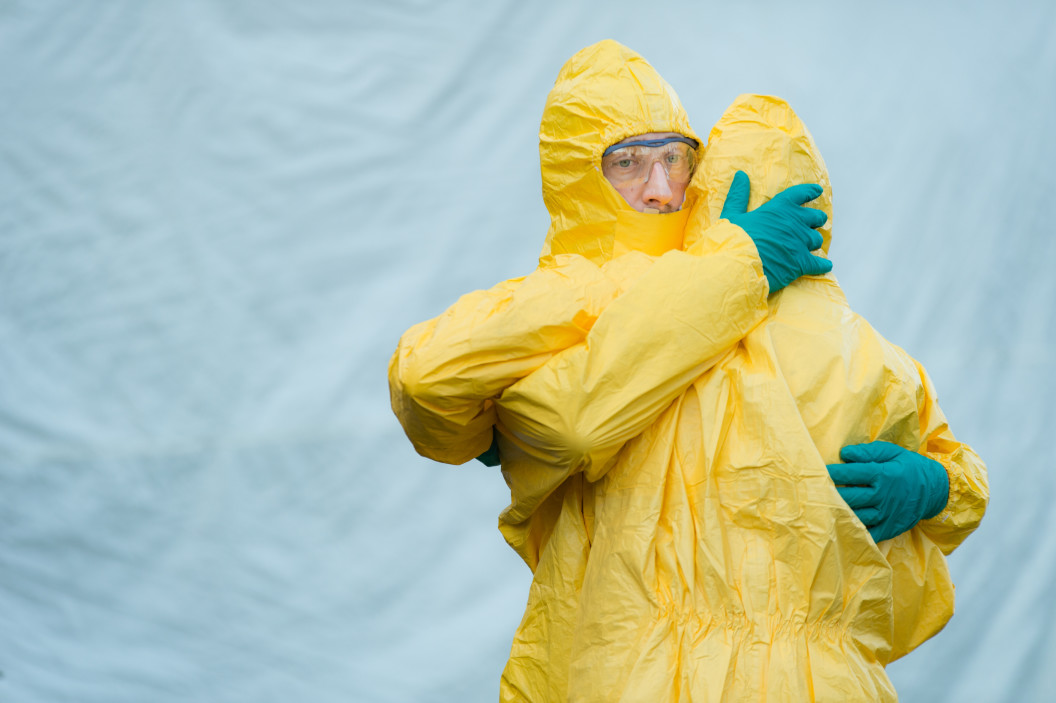Image by @criskorah under licence in the public domain
Covid-19: imagery of a pandemic
I write in a period of change, when an unknown, unrecognised virus, originating most likely in Wuhan in China, became a global killer, shutting down whole countries, and endangering economies and social structures.
The long-term effect this virus will have on our world is as unknown as its origins. We have, as yet, little idea about its impact across the globe, on national and local communities and on the individual. We are all, together, in a period of unprecedented change and uncertainty.
Photojournalists are in a special place to explore this radical change. While the performing arts are sadly closed down in real time because of their reliance on live audiences, photographs have more direct, one-to-one methods of distribution, whether on Instagram, in online magazines and newspapers, or directly from the photographer’s or gallery website. Photojournalists can bring what is happening directly into the viewers’ reach, without the need for a mediating public gathering, to draw attention to the effects of change. This gives them a huge responsibility. Afterwards, playwrights will write, those theatre companies which are left will perform, and films will be made about the pandemic. But now, here in the present, the photojournalist works. And interprets, through images, what is happening.
In a strong and developing genre, female photojournalists have been providing an alternative view to the immediacy of the media. Photo stories of forgotten or little-known communities in urban and rural settings, in Singapore, Beijing, Azerbaijan, Lagos. The effects of climate change, conflicts around the world, the increase in poverty, the constantly spreading exodus of refugees, from Syria, Pakistan, Somalia. All are woven in a tapestry of images which captures life in a time, often, of sorrow, revealing a truth which illuminates our understanding of the events of our world in a new and revelatory way.
But Covid-19 potentially increases the complexity of their role. Will this virus give birth to a new order, one characterised by a growth in populism and nationalism, by economic meltdown and increasing levels of inequality around the world? To great famine, and increased levels of poverty, adding to the estimated 734 million who are already deeply deprived? To burgeoning levels of surveillance and infringements of human rights? Propaganda and misinformation? To desperation and despair, illness and death? And will the rich countries of the world increase the politics of oppression, strengthening their walls and borders against the rest of the world’s population?
Or will this new order be characterised by a greater awareness of connectedness, of shared projects, research and dreams, with investment based on what is good for the planet rather than human greed? A world where success is based on bringing difference together, not seeing it as a threat and rejecting it. Will a consensus be built around the recognition that together we may be strong against future pandemics, financial crashes and climate change but apart we will be lost?
The world is on the cusp of opportunity, or disaster.
How are female photojournalists going to meet the responsibility to bring to us a post Covid-19 world? In order to explore this I will focus a lens, over the coming weeks, on how the impact of the pandemic on communities and individuals has been captured so far, and some of the issues it raises for photojournalists: changes in working practices, a review of the ethics of photography, barriers to travel, increasingly policed borders, suspicion and its associated violence, pandemic hotspots etc. And together with the women involved, photographers and editors alike, aim to identify what the new photojournalistic topography might look like. For it is only by laying witness to this spreading virus and its effect on people around the world, that we will deepen our understanding of our affinities, similarities and shared strengths as well as our profound differences.
Jane Quinn is a writer, curator and director. Her History of Art PhD from Birkbeck, University of London, explores the imagery of conflict.












